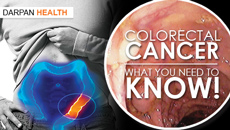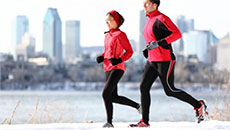A global killer, strokes claim nearly 15 million people worldwide every year and in Canada, six percent of all deaths are attributed to it, making it the third leading cause of death in the country. A stroke occurs by a disturbance or stoppage in the blood flow to the brain, depriving it of oxygen. There are two main types of stroke: hemorrhagic stroke caused by the rupture of a blood vessel and subsequent bleeding, and ischemic stroke caused by blood clots. A TIA or transient ischemic attack, also known as a "mini stroke", occurs when clots hinder blood flow. A stroke can happen to anyone at any age, in fact, a 2014 Heart and Stroke foundation report states that more young people are having strokes and this trend is expected to rise. Strokes usually happen without warning so it is best to be prepared and know what they are, the risk factors and the warning signs.
EFFECTS
The effects of a stroke vary depending on where the brain was injured and how much damage occurred but a stroke significantly impacts physical, cognitive and emotional functioning such as difficulty with speech, vision, memory, concentration and moving. For example, a stroke on the left hemisphere of your cerebrum leaves a weakness or paralysis on the right side of your body while a stroke on the right hemisphere of your cerebrum leaves the left side of your body weak or paralyzed.
Stroke is a leading cause of long-term disability as most stroke survivors recover to some extent but must undergo extensive rehabilitation. With the help of a team of health professionals known as the stroke team, an individual's rehabilitation may include re-learning self-care skills such as dressing, eating and bathing, learning how to walk again, communication skills, thinking skills to improve concentration and memory as well as social skills to help interact with others.
According to Deborah Rusch, Manager of Survivor Support at the Heart and Stroke Foundation, the foundations’ new priority is “to promote recovery by enhancing support for survivors and caregivers and aims to increase quality of life and risk factor management.” They achieve this through their Living with Stroke program which is designed to aid stroke survivors and caregivers in improving their quality of life. This 8-week volunteer-run program is free in many B.C. communities. With the lengthy and tiring journey of recovery, programs like these inspire hope and help survivors gain confidence in dealing and coping with the immense challenges of living with stroke.
WARNING SIGNS
Stroke is a 911 medical emergency so every second counts and recognizing the warning signs is vital. In order to help a loved one, you need to be able to recognize the warning signs as taking action quickly is extremely crucial. A helpful acronym to remember all the signs of a stroke is FAST, which stands for:
Face drooping: Does one side of a persons face droop if he or she tries to smile?
Arm weakness: If the person raises their arms does it stray downward?
Speech difficulty: Does simple speech sound slurred or strained?
Time to call 911: If any of the above signs are observed by you, it’s time to call emergency medical services.
According to the Heart and Stroke Foundation, the five signs of stroke are weakness, trouble speaking, vision problems, headache and dizziness. If an individual’s stroke is being caused by a blood clot, doctors are only able to administer the clot-busting drugs required within a few hours after symptoms begin; therefore, time is of the utmost essence. Brain cells die at an accelerated rate, about two million per minute after a stroke’s onset thus "time lost is literally brain lost".
RISK FACTORS
Age, gender, ethnicity, family history, and history of stroke or TIA are considerable risk factors which greatly increase your chance of stroke and are unfortunately, all uncontrollable factors. Most strokes occur to people over the age of 65 and more women than men die of stroke. Having a close family member who has had a stroke greatly increases your risk and if you had a mini-stroke, chances of re-occurrence is exponential. The good news is that there are several risk factors that you can control to decrease your chances of having a stroke, whether you have the disposition or not. These include hypertension, high blood cholesterol, smoking, atrial fibrillation (irregular heartbeat), obesity, lack of exercise, diabetes and stress
SOUTH ASIANS AT RISK
Research shows that South Asian people (those of Indian, Pakistani, Bangladeshi, and Sri Lankan origin) are more likely to develop hypertension than the general population. It is especially frightening as hypertension or high blood pressure is another silent killer and is the number one risk factor for stroke. It should come as no surprise then that according to the Heart and Stroke Foundation, "research has shown that people of South Asian descent are at greater risk of developing heart disease and stroke – and at a much earlier age – compared with other ethnic groups."
"It’s true," says Dr. Arun Garg, "the Indian subcontinent population has a greater prevalence to stroke than the general population." Recipient of the Don Rix Award for physician leadership award in part by his endeavors to increase the South Asian community's awareness concerning their cardiovascular health, Dr. Arun Garg stresses that "prevention is better than treatment and citizens can prevent their risk of a stroke or heart attack with a healthy lifestyle, diet and physical activity." According to Statistics Canada, Canadians eat about 3400 mg of sodium each day which is more than twice the amount we need. This is a truly terrifying statistic as salt is known to cause hypertension and South Asians typically use added levels of salt in their cuisine. Rusch says, “Many free hypertension clinics are provided at various temples and festivals. These provide the South Asian public with blood pressure screenings and the ability to get stroke and hypertension prevention information face-to-face.” Additionally, the Heart and Stroke Foundation offers many healthy South Asian recipes on their website and more information about the free clinics can be found online at [www.outhealthisourwealth.ca].
PREVENTION
While it’s true that a stroke can happen to anyone at anytime, learning about its risk factors means you can actively take steps to decrease your risk of stroke. Hypertension is the biggest contributor to increasing risk of stroke so it is essential that you make sure to monitor your blood pressure levels at regular intervals. If it is higher than the normal 120/80 mmHg, seek the advice of a doctor as well as modify your lifestyle and diet. Eating less sodium, avoiding high cholesterol foods, increasing your intake of fresh fruits and vegetables and exercising regularly are all ways to improve your vascular health.
Exercising not only lowers high blood pressure but also will make you lose weight and losing as little as 10 pounds can make a real impact in reducing your risk for stroke. Another modification is to quit smoking. Not only is smoking extremely detrimental to your health, it can cause a two-fold increase in the risk of stroke. If you have atrial fibrillation (AF) or an irregular heartbeat, you should seek treatment as it may increase the risk of a stroke. Knowledge is power and knowing the risk factors, following your doctor’s advice and adopting a healthy lifestyle are essential steps to take in order to prevent a stroke and live a long and healthy life.
QUICK PREVENTION TIPS:
Dr. Gulzar Cheema is a family physician and former B.C. cabinet minister for mental health can and be seen on weekly health segments on OMNI TV where he talks about health issues and promotes health awareness to the South Asian community. According to Dr. Cheema the following dietary changes can significantly decrease the risk of stroke.
• Eat whole fruits instead of drinking fruit juice
• Make the switch from white to brown rice
• Eat whole grain bread instead of white bread
• Snack on raw vegetables instead of chips or chocolate
• Substitute meat with legumes (dried peas, beans, lentils) two to three times a week
• Consume foods rich in fibre such as brussel sprouts, corn, peas, lentils, yams, apples, blueberries, cranberries, oat cakes, wild rice , peanut butter and flax
RESTRICT: butter, ghee, full-fat sour cream, full-fat cream cheese, oil-based salad dressings, whole milk and snacks with high fat such as potato chips, cookies, crackers, chocolate bars, doughnuts and Punjabi sweets






